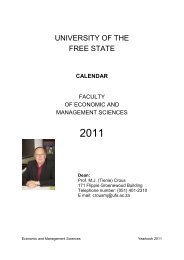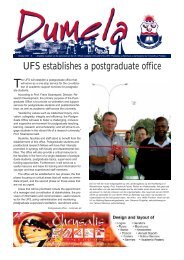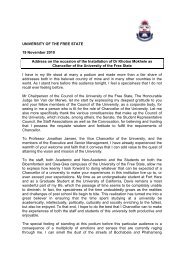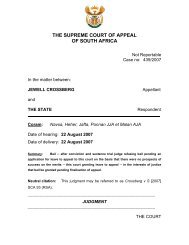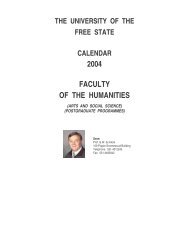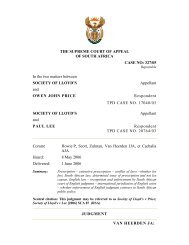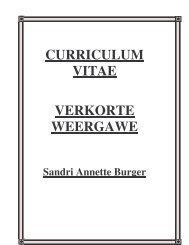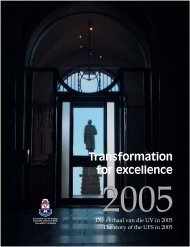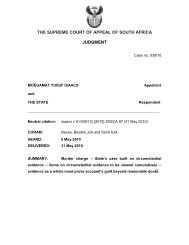THE SUPREME COURT OF APPEAL OF SOUTH AFRICA ...
THE SUPREME COURT OF APPEAL OF SOUTH AFRICA ...
THE SUPREME COURT OF APPEAL OF SOUTH AFRICA ...
Create successful ePaper yourself
Turn your PDF publications into a flip-book with our unique Google optimized e-Paper software.
17counsel for the respondents submitted, live with the consequences of the affidavits readfor their own sake.[55] The respondents adduced evidence calculated to show that they published thecensored article with no intention to breach the terms of the order. In summary, if theirprotestations can be believed,i) they understood that publication of a truncated version of the article which did notenable the reader to identify the alleged abuser fell outside the terms of the order; andii) they believed that it was in the public interest to publish details of Klay’s unfortunatehistory of abuse.[56] Nevertheless the respondents knew that if they disclosed the identity of the abuserin the article they would breach the order. As Weideman put it in her answering affidavit:‘Ek stem wel saam met die punt wat in die tweede laaste paragraaf van die brief gemaak word,naamlik dat minagting van die Hof slegs sou geskied “indien ons kliënt (synde die Applikant) seidentiteit op enige wyse afgelei kan word uit bogenoemde”, te wete die gewysigde weergawe vandie artikel. Ek en die Tweede Respondent was versigtig om toe te sien dat die Applikant seidentiteit nie uit die (gesensorde) artikel sou blyk nie.’[57] The first respondent’s state of mind before and at the time of publishing the articlecan best be understood by reference to her answering affidavit, the contents of theeditorial and the design of the cover of Huisgenoot.[58] As appears from the passage quoted in para 56 above, Weideman sought toconvey her understanding that the order would have been breached only if the identity ofthe abuser could have been inferred from the amended article. The editorial conveys a likeimpression. That however was a misrepresentation of her state of mind. That her trueappreciation of the scope of the order was, correctly, much wider, appears from para 20 ofher affidavit:‘Die artikel en die voorblad was juis gesensor aangesien die Tweede Respondent opreg vanmening was dat daar sodoende aan die bevel voldoen sou word.’Weideman knew, therefore, that disclosure of Els’s identity (as the alleged abuser) eitherin the article or on the cover would breach the order. Consistent with that knowledge she



